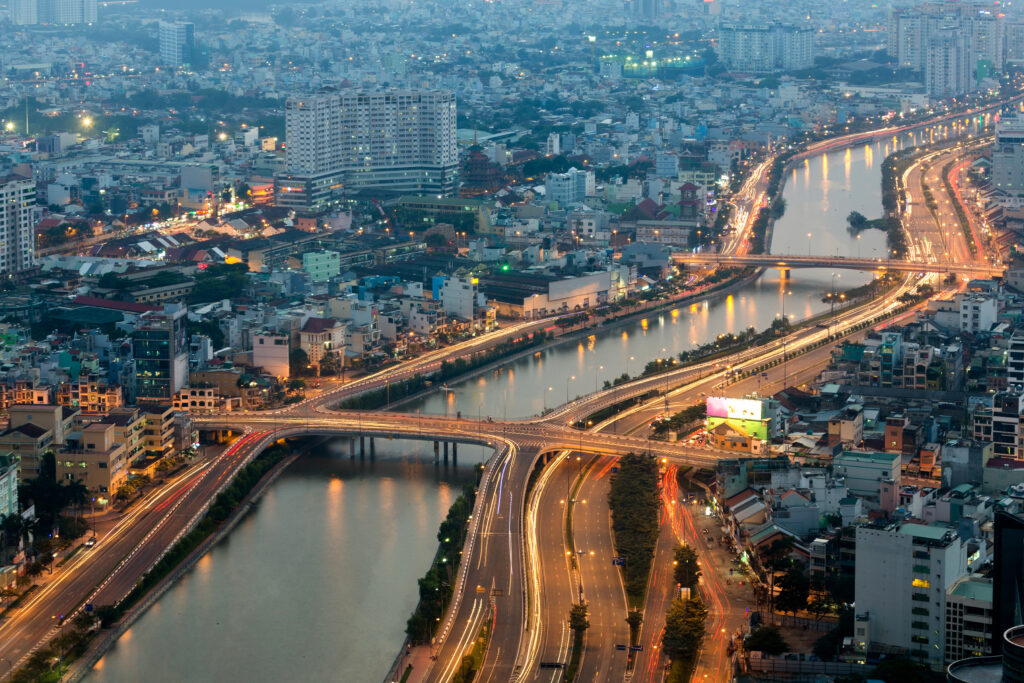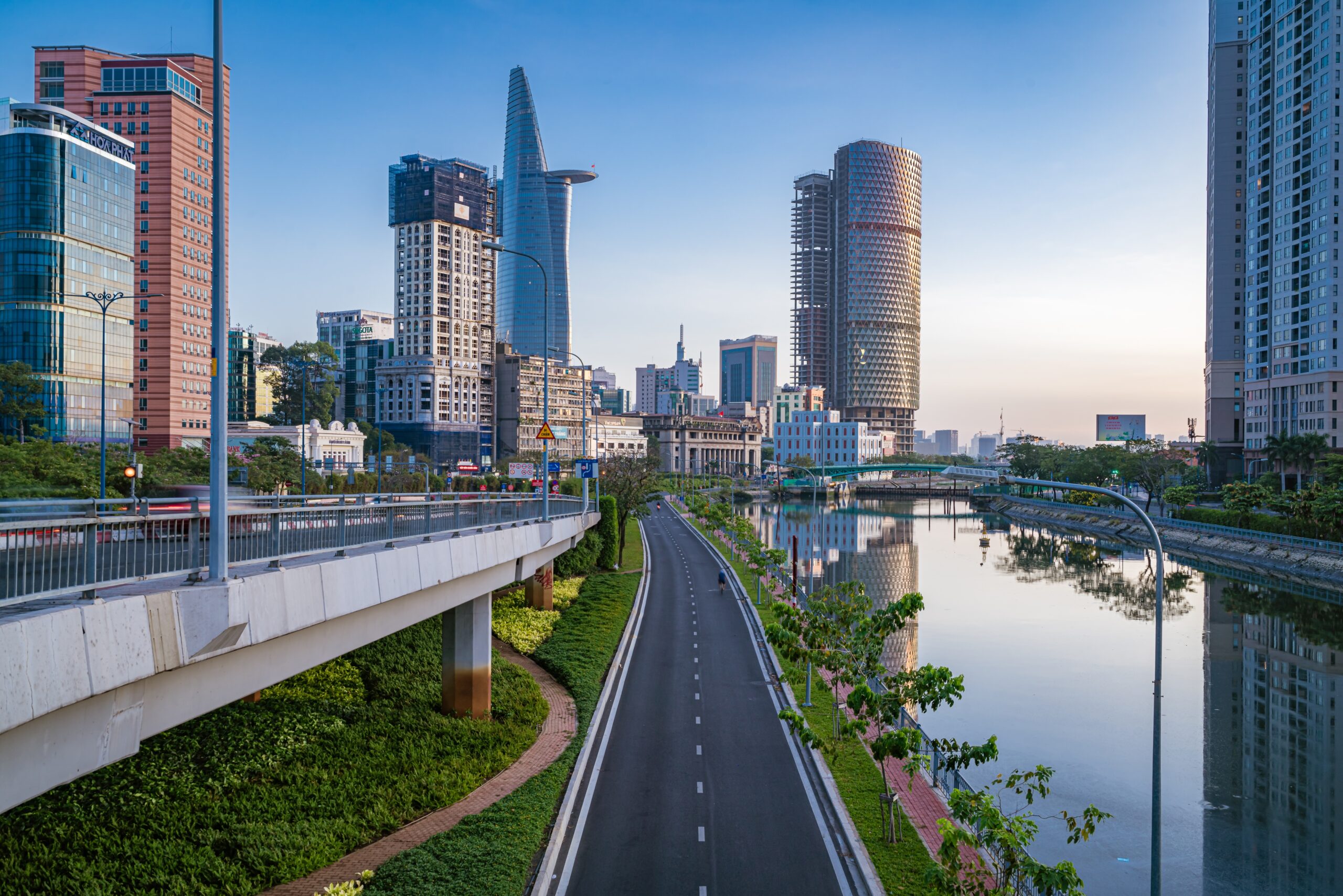Vietnam is one of Southeast Asia’s fastest-growing environments for road infrastructure. As cities like Ho Chi Minh, Hanoi, and Da Nang continue to expand, the mix of motorbikes, buses, and cars places a unique strain on road infrastructure—particularly on the markings that guide and organize daily traffic.
For these urban environments, choosing the right road paint products in Vietnam is essential. The paint must withstand high traffic volumes, intense heat, and heavy rainfall, all while maintaining visibility and adhesion.
Let’s take a closer look at what affects road paint performance in Vietnam and why the right solutions are key to safety and efficiency.
The Impact of Climate and Traffic on Vietnam’s Urban Roads
Vietnam’s tropical monsoon climate presents one of the toughest conditions for road marking paints. Frequent downpours, long hours of sunlight, and humidity levels above 80% can cause premature fading, peeling, or softening of inferior paints.
On top of that, the country’s dense traffic, particularly at major intersections, subjects markings to constant friction, heavy braking, and rapid shifts in road temperature. Some of the challenges include:
- Abrasion from tires and braking on dense traffic corridors
- Thermal expansion and contraction caused by temperature swings between day and night
- Prolonged UV exposure that leads to color fading
- Water accumulation and drainage issues that test paint adhesion and waterproofing
In this context, road paint for Vietnam roads must deliver both resilience and consistency. Paints that perform well in temperate or dry climates may fail quickly under tropical conditions.
When cheap, low-grade formulations are used, contractors face faster deterioration and more frequent repainting schedules. This leads to higher maintenance costs, increased traffic disruptions, and inconsistent road safety standards.
Rua Seguridad understands these challenges. Its thermoplastic road paint in Vietnam is developed to withstand high temperatures, heavy traffic, and the intense weather conditions of Southeast Asia.

Road Paint Performance Comparison
To understand how paint quality affects long-term results, the table below compares common attributes between Rua Seguridad road paints and typical imported alternatives:
| Performance Factor | Rua Seguridad | Typical Imported Road Paint |
| Climate Adaptability | Designed for high humidity, rainfall, and heat | Often intended for temperate climates |
| Durability | Can last up to three years on high-traffic roads | Typically one year or less before significant wear |
| Reflectivity Retention | Maintains brightness over extended use | Tends to fade and lose bead adhesion quickly |
| Adhesion Strength | Strong bond on both concrete and asphalt | Prone to peeling or cracking under thermal stress |
| Customizability | Formulations adjusted to local specifications | Limited adaptability and color options |
| Application Conditions | Performs consistently in variable humidity | May require dry, cool environments for best results |
The takeaway is that climate-appropriate paints not only perform better but also reduce repainting cycles and maintenance costs.
5 Factors That Influence Road Paint Longevity
Road marking paints operate in one of the harshest environments in the construction industry. Their longevity depends on multiple variables. Here are some of the factors that can affect road paint longevity:
1. Paint Type
- Thermoplastic paints are commonly used in Southeast Asia due to their durability and high reflectivity. They form a thick, wear-resistant coating and are ideal for major highways and intersections.
- Solvent- or water-based paints are often used for secondary roads, parking areas, and temporary markings due to their ease of application and faster drying times.
2. Surface Preparation
Proper surface cleaning and priming have a significant influence on adhesion. Dust, oil, or moisture on the pavement can cause paint to lift prematurely.
Thorough cleaning and proper priming provide a solid foundation, which allows the paint to bond securely and extend its lifespan. This step is often overlooked, but it is one of the most critical for long-term performance.
3. Temperature and Humidity
Paint must be applied within specified temperature and humidity ranges to achieve correct viscosity and film formation. If the conditions are too hot, cold, or damp, the paint may not cure properly and could lose strength.
Following the manufacturer’s guidelines ensures the coating sets as intended, creating a finish that can withstand the stress of daily traffic and changing weather conditions. Contractors who skip this step often face faster deterioration and higher costs.
4. Traffic Conditions
The amount and type of traffic that a road carries directly influence how quickly markings wear down. Roads with heavy truck use, frequent braking, or sharp turns put greater stress on painted surfaces.
High-traffic areas, such as junctions, bus stops, and roundabouts, wear out faster and require more frequent repainting than less heavily used stretches. Knowing this makes scheduling maintenance easier.
5. Maintenance and Inspection
Even the most durable paints need periodic inspection to ensure markings remain visible and effective. Regular monitoring helps detect fading, cracking, or peeling before they become safety hazards.
Timely touch-ups and preventive maintenance extend the lifespan of the markings, reducing the overall cost of repainting. In the long run, a consistent inspection program saves both time and resources while keeping roads safer.

Why Choose Rua Seguridad?
Safe and reliable roads in Vietnam require the right solutions. Partnering with Rua Seguridad gives you:
- Proven Durability in Tropical Conditions: Specially engineered to withstand Vietnam’s heat, humidity, and heavy rains, ensuring longer-lasting performance
- Cost Efficiency Through Fewer Repaints: With paints that last up to three times longer than standard imports, contractors save on maintenance and reduce disruptions
- Superior Visibility and Safety: High reflectivity and strong bead retention mean more precise guidance for drivers, day or night, rain or shine
- Strong Local Expertise: With years of experience across Southeast Asia, Rua Seguridad has established itself as a reliable thermoplastic paint exporter, offering solutions tailored to regional infrastructure challenges.
- Customizable Solutions: Formulations can be tailored to meet Vietnam’s specific road types, traffic volumes, and safety standards
Build Better Roads in Vietnam with Rua Seguridad
Vietnam’s infrastructure boom is reshaping cities and connecting provinces—but with more traffic comes greater demand for durable, reliable road markings. The quality of paint will define how well roads stay safe, visible, and efficient.
Rua Seguridad offers paints engineered for tropical conditions, delivering longer-lasting performance and fewer maintenance disruptions. With customizable, quality-assured solutions, we set a new standard in road safety materials for Vietnam’s challenging environment.
Partner with Rua Seguridad today to deliver safer roads across Vietnam.



